It’s not until the Empire State Building’s camera-clutching crowds start to fade into the background, that I find myself venturing into a New York not teeming with tourists or blaring with sirens, but characterised instead by old-school opulence and historic charm. At the root of which is the Fifth Avenue Hotel and its tale of the city’s lesser-known socialite from the past.
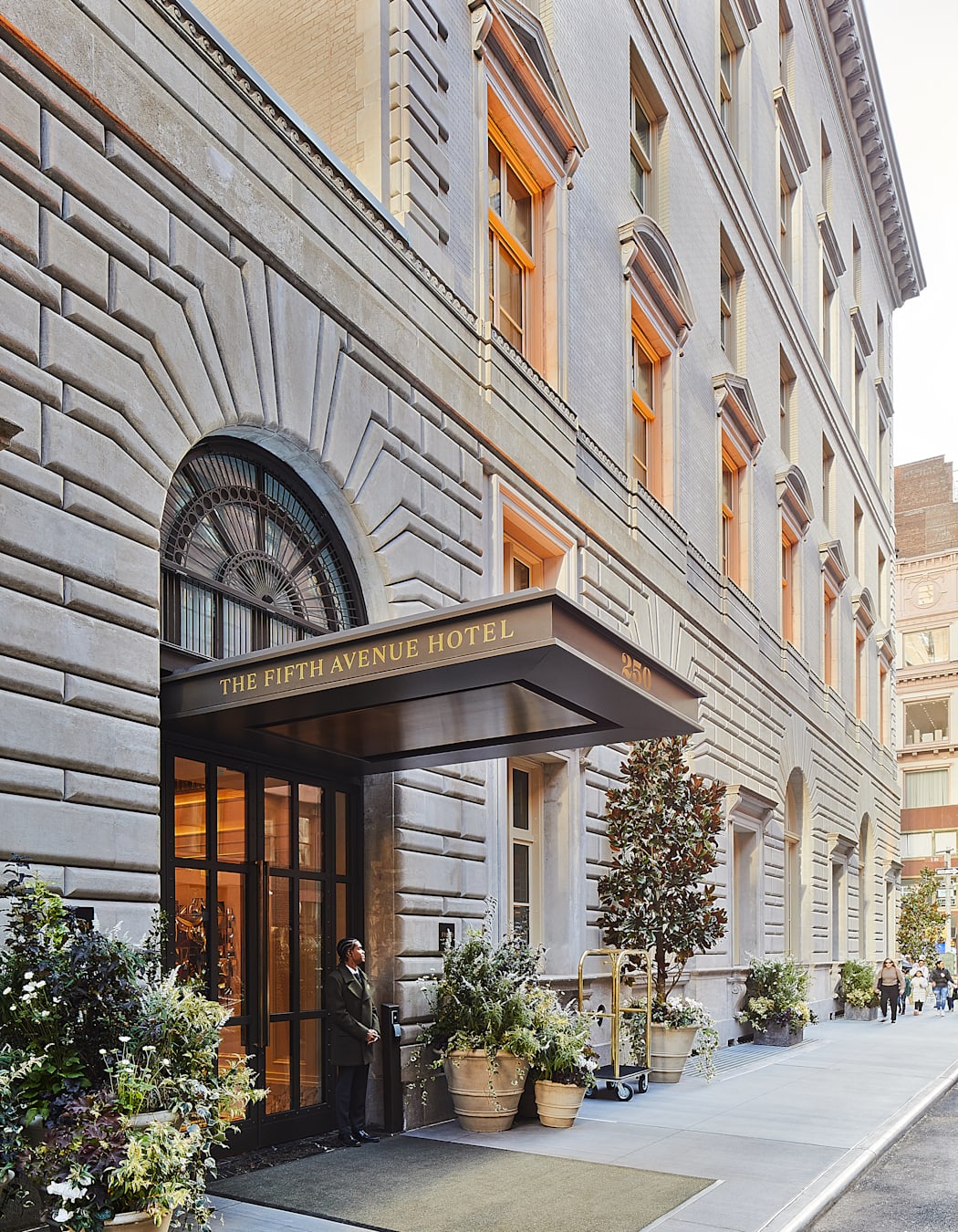
Caroline Astor was the gatekeeper of 19th-century New York’s upper echelon, and if you’d made her guest list of who’s who in NYC, you’d secured your spot among the city’s nouveau riche. But, as the Astors warred with the Vanderbilts over their social rankings, one Charlotte Goodridge slowly rose in status, albeit as a humbler hostess. She was renowned for her upscale receptions, held in her coveted Fifth Avenue address, one of the last still-standing urban mansions of the Gilded Age. And, on a strangely sunny afternoon for the middle of March, I find myself at the doors of Goodridge’s legendary home.
It’s not all that striking at first glance – grand, yes, but nothing that stands particularly proud among Bergdorf Goodman, Saks, and other giants of this famed shopping stretch. But once a dashingly outfitted doorman ushers me in, it’s a different story. Suddenly the streetwear I’ve worn to try and look like a modish local feels colourless and drab in the richly jewel-toned lobby that’s adorned with cabinets of crystalline artefacts and aureate upholstery.

There’s enough in this grand space to stand and admire for hours on end. But, after check-in, I leave the bell-hops to wheeling Rimowas around and wander off in pursuit of my fourth-floor Mansion Suite, where I’m told a private butler is awaiting my arrival. And, that he is, bearing a hot towel, pomegranate-laced welcome drink and a smile that could cheer even the most cynical of locals.
I’m only half listening as he runs me through the particulars, as I can’t help but ogle the ornate stucco ceilings, gilded spotlights, prismatic Murano chandelier… The serenity of this suite set above NYC’s busy fashion locus is striking, as is the arched seafoam screen separating my living area and bedroom – the luxury of having both a rarity by anyone’s standards in a city as short on space as this one.
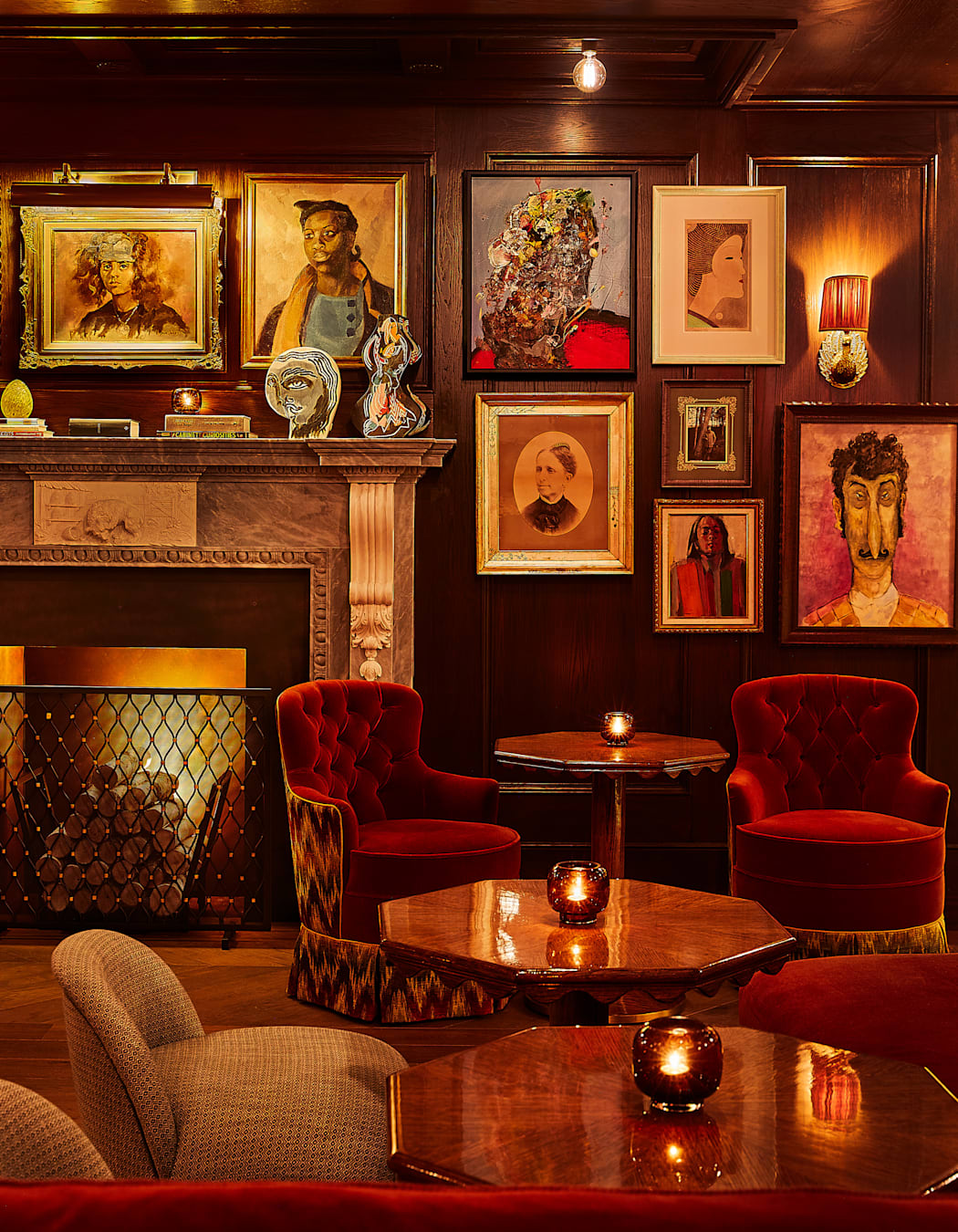
Behind it all is maximalist mastermind Martin Brudnizki, who more recently brought his magic across the pond to design London’s Broadwick Soho hotel. But here in NoMad – along with New York-based architect Perkins Eastman, who was enlisted to build a second all-glass tower for yet more rooms – he’s gone all out, individually styling all 151 rooms and suites, bringing a vivid contemporary feel to Ms Goodridge’s Manhattan residence. Now spread between two buildings which seamlessly bridge the gap between old and new, flamboyant spaces are tailored to the artistically inclined flâneur and tricked out with horse-headed lamps, mother-of-pearl drinks trolleys and South East Asian artwork, that I’m told have been collected from owner Alex Ohebashalom’s jaunts. Some suites are themed around animal masks that nod to the Astors’ balls, while some are well-dressed enough in ruched fabrics and tassel-trimmed tapestries to easily fit an elaborate dress-code.
After pondering the past lives of each ornament in sight, I realise I’m late to meet a friend down at the speakeasy-inspired Portrait Bar. It’s secluded and set back from the streets, giving it the exclusive air of one of Goodridge’s parties. Chatter hums from spiffily dressed sippers, and we take to the fire-warmed sofas, each of which is framed by gold-leaf-lined bookshelves and a gallery’s worth of artwork. In both the decor and drinks, the beauty lies in the details here: cocktails are packed with punch and inspired by spirits from around the world (Oaxacan gins, Korean sojus and Japanese whiskeys are just a few blends that grace menus), with whimsical names that nod to their origin.
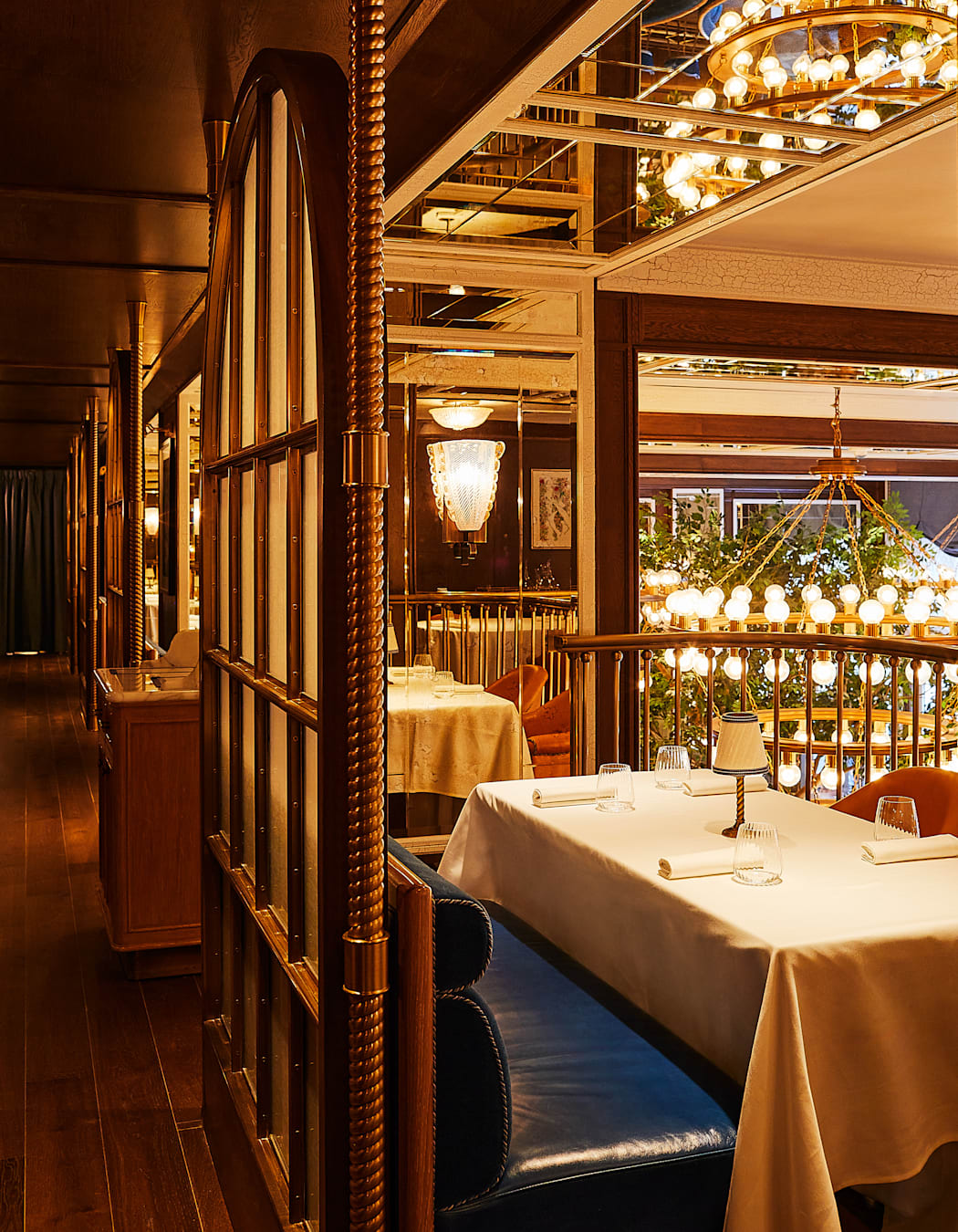
Across the hall, dinner is a well-rehearsed dance at Café Carmellini, the ace up this hotel’s sleeve, named for lauded head chef Andrew Carmellini who is culinary royalty around these parts. Rightly so, because his cookery is truly fit for a king – or at least the US version of one – and the restaurant’s meticulous design mimics the theatrics of Goodridge’s receptions in its terraced boxes, blue-velvet banquettes and princely chandeliers. As waltzing waiters dance over asparagus in Maltaise sauce, scallops in coconut curry and amped-up Italian and French fare, we revel in Carmellini’s tough-to-beat talent.
The next morning my now-more-buddy-than-butler Martin (that’s my side of the story anyway) knocks on the door to wake me with breakfast, and I realise I’m becoming rather accustomed to high-society life. But, my joy is marred by a rather rough turn in the weather. British stubbornness prevails, so I pop my umbrella and head off into a sea of suits and sightseers.
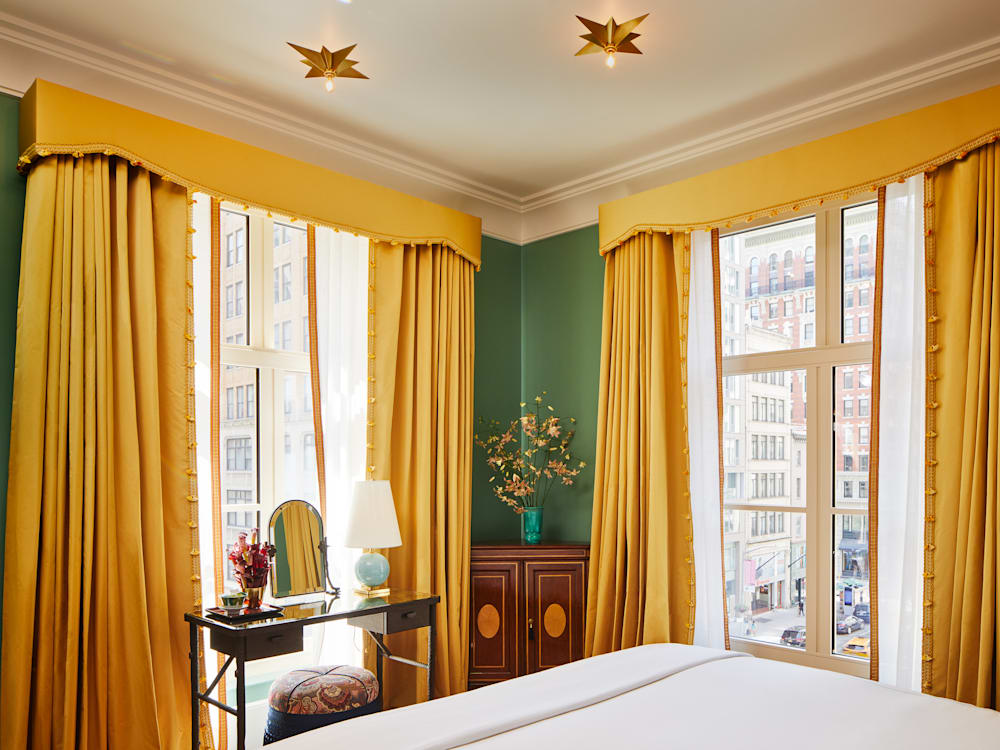
Having grown up in a city, I know the backstreets are usually better, and this proves true of New York too as I stumble across a wealth of vintage shops and gate-kept cafés that rest behind busier thoroughfares. After hours of cooing over Vogue-worthy wear, I decide it’s best I don’t push my luck with an already overweight suitcase, and head for the Upper West Side instead.
By the time I step off the subway, the rain has passed and I spot a slither of sun fighting its way through a sea of grey. Perfect timing, as I’ve arrived at ‘Millionaire’s Row’, a street once seamed with magnate-owned mansions. Things look a little different these days (some have been replaced with Central Park-admiring apartments, others by department stores and stately schools), but I’ve come to spot hints of the riches that remain. As I look closely – and conjure a little imagination – I notice the Vanderbilts’ soirée-throwing legacy lingers on in their former property portfolio on the corner of West 58th Street, the Fricks’ artistic patronage in their namesake museum and the Sinclairs’ spirit in the Ukrainian Institute’s hallowed halls, which took up residence in their mansion.
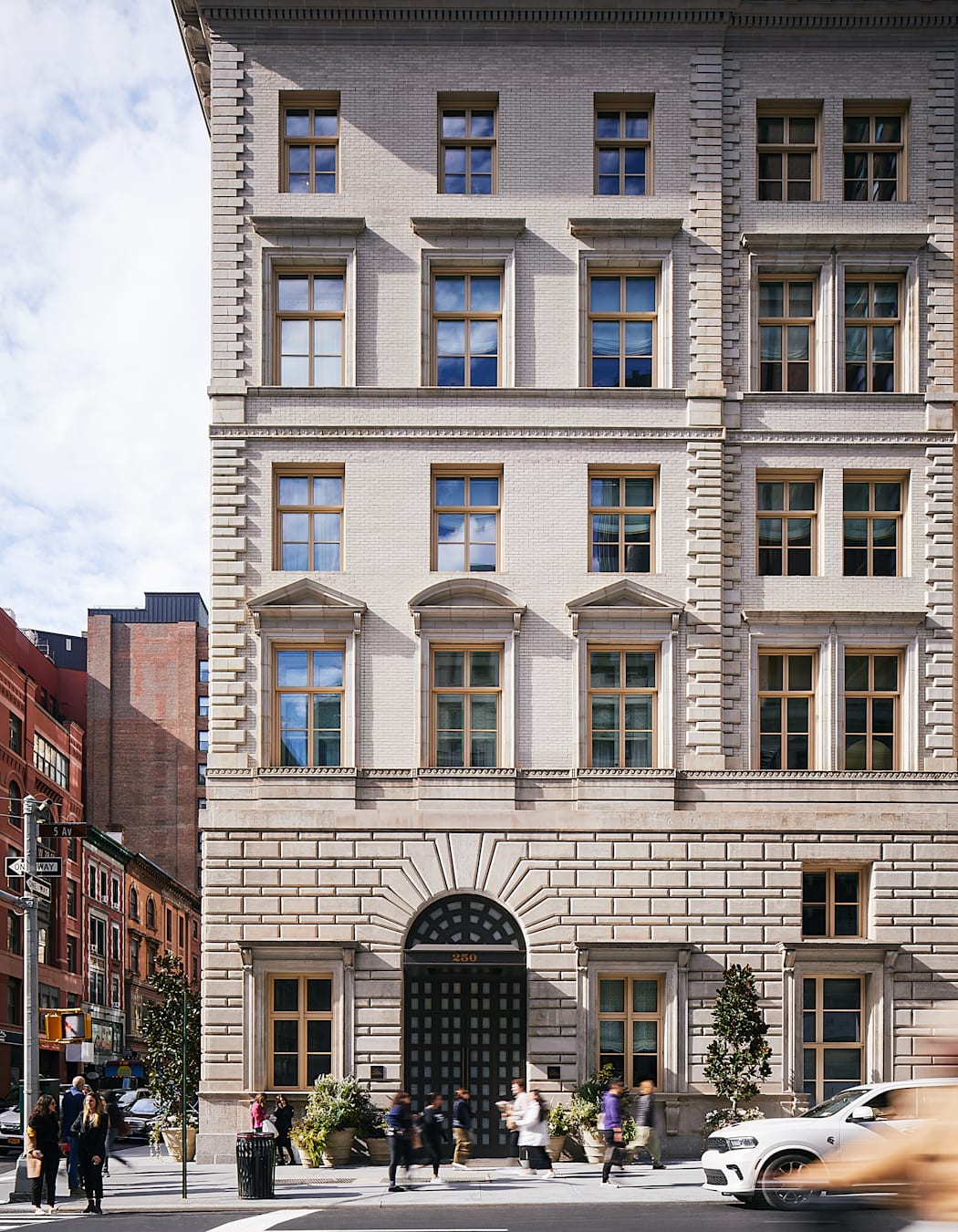
On returning to the Fifth Avenue Hotel, I’m welcomed back like family, and feel part of the building’s – probably very costly – fabric by now. Staying here I’ve come to realise that while New York may be where you come to reinvent yourself (‘Make it there, make it anywhere’, after all), its ability to remake its history rather than erase it goes unsung; and the Fifth Avenue Hotel is no different, for it’s done more than simply homage its Gilded Age glory days, but repackaged them, rather exquisitely, for a new generation of savvier socialites.
Want to be a part of it? Check out all the other hotels in our hand-picked New York City collection.

